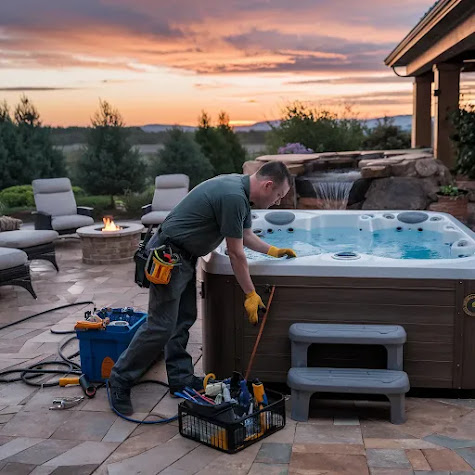Navigating the complexities of hot tub maintenance, especially understanding repair costs, is essential for spa owners to optimize their investment and avoid unexpected expenses. Issues ranging from minor leaks to major component failures can significantly impact your budget if not handled with care and foresight. While many people rely on professional services, gaining knowledge about common malfunctions and their solutions can lead to substantial savings. This discussion explores practical strategies for reducing repair expenses through preventative maintenance and efficient troubleshooting, emphasizing the importance of being proactive rather than reactive in maintaining your hot tub. We will also delve into the hidden costs of delayed or DIY fixes to help owners make informed decisions.
Common Hot Tub Issues
Hot tubs often face common issues such as faulty heating elements, clogged filters, and leaks in the plumbing system. Heating elements are critical for maintaining water temperature, and their failure can greatly reduce the enjoyment of the hot tub. These problems require timely intervention and a thorough understanding of the heating system for accurate troubleshooting and repair.
Filter clogs are also common, caused by debris and mineral deposits. Regular maintenance and knowledge of your hot tub's filtration system specifications are crucial to prevent such issues. A clogged filter can degrade water quality and strain other components, potentially causing more severe problems.
Leaks in the plumbing system can arise from various factors, including wear and tear, improper installation, or damage. Early detection is vital, as leaks can lead to significant water loss and structural damage to the hot tub.
Effectively addressing these common issues requires technical know-how and an understanding of how each component contributes to the overall functionality of the hot tub, ensuring a safe and relaxing experience for all users.
Cost-Saving Repair Tips
Efficiently addressing common hot tub issues can greatly reduce repair costs and extend the life of your spa. Proactive maintenance is essential. Regularly checking and cleaning filters can prevent dirt and debris from clogging the system, which often leads to more severe malfunctions.
Maintaining balanced water chemistry is also crucial; improper pH levels can corrode components and accelerate wear.
A good cover is important for protecting the hot tub from environmental elements and maintaining water temperature, reducing heating costs and preventing unnecessary strain on the heating system. Regularly inspect your cover for tears or waterlogging. A well-maintained cover saves on energy and extends the overall health of your spa.
For those with technical skills, learning basic troubleshooting and minor repairs can be a cost-effective approach. Many resources, including online tutorials and manufacturer manuals, can guide you through simple repair tasks. However, it's important to know when to call a professional. Attempting complex repairs without the necessary skills can lead to more damage and higher costs.
Conclusion
In conclusion, while the appeal of owning a hot tub is undeniable, its upkeep can sometimes feel like navigating a suspense thriller—predictable yet surprisingly expensive. Wise owners who engage in regular maintenance and become familiar with their hot tubs can manage repair costs effectively.
By investing in preventative measures and mastering basic troubleshooting, the financial burden of hot tub ownership can shift from a daunting prospect to a story of savvy stewardship.




No comments:
Post a Comment